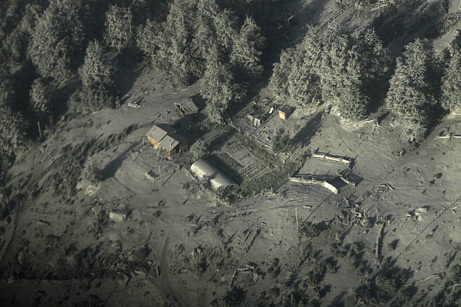The eruption of Chile’s Chaitén Volcano stands as a dramatic reminder of nature’s unpredictable fury and breathtaking beauty. Situated in the remote Los Lagos Region, this stratovolcano erupted in May 2008, marking its first significant activity in over nine millennia. The event was characterized by a formidable combination of ash plumes, flowing lava, and electrifying lightning, captivating onlookers and scientists alike. Such phenomena evoke a common observation: the dynamic interplay between the earth’s geological forces and human existence.
For many, volcanoes symbolize both destruction and rebirth, a duality that is inherently fascinating. The Chaitén eruption released vast clouds of ash into the atmosphere, causing widespread disruption, including the evacuation of approximately 4,500 residents from nearby towns. This immediate consequence of the eruption underscores a heart-wrenching reality—nature is indifferent to human life and infrastructure. As the ash settled and blanketed the surrounding landscape, it transformed the serene environment into an otherworldly scene, capturing the imagination of photographers, journalists, and scientists who sought to document the cataclysmic event.
Beyond the immediate destruction, the Chaitén eruption invites contemplation regarding the underlying geological processes at play. The phenomenon of volcanic eruptions serves as a testament to the earth’s internal dynamics. Subduction zones, where tectonic plates converge, create immense pressure that can lead to catastrophic eruptions. Chaitén is situated at such a zone, and its activity is a poignant reminder of the Earth’s volatile history. The sheer scale of earthquakes, eruptions, and the formation of new landscapes beckons humanity to ponder its place within the grand tapestry of geological time.
The study of such eruptions enriches our understanding of not just volcanic behavior, but climate patterns as well. The ash released into the stratosphere during the Chaitén eruption had implications for atmospheric conditions, influencing weather patterns and potentially affecting global climate. Scientists continuously analyze these implications, seeking connections between volcanic activity and climatic shifts, illustrating a deeper intertwining of geological and anthropogenic factors.
Moreover, the Chaitén eruption speaks to humanity’s resilience and adaptability in the face of natural disasters. Recovery efforts in the aftermath involved not only infrastructural rebuilding but also emotional healing for communities disrupted by the event. As these communities began to restore their lives, they also cultivated a renewed appreciation for the environment, reminding us of our vulnerability and interconnectedness with the natural world.
In sum, the eruption of Chaitén Volcano is not merely an isolated event; it serves as a profound symbol of nature’s overwhelming power and the intricate relationship between humanity and the planet. From the immediate visual spectacle of ash and lightning to the broader implications on geological and climatic studies, this volcanic eruption remains a source of fascination and reflection, urging society to remain observant and respectful of the forces that shape our existence.
